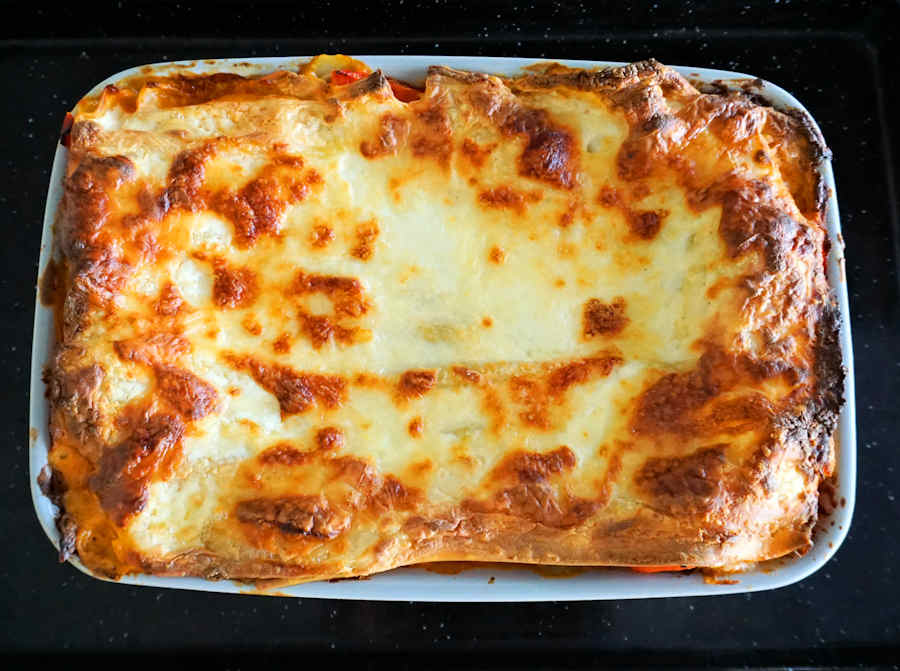
What's your favourite kind of lasagne?
I love a proper lasagne, with thick ragù sauce which, incidentally, should not be made entirely from minced beef but in the best version of a little beef and a lot of Italian pork sausage meat. The thick layers of meat between the pasta sheets, almost like meatball pasta sandwiches, with the bechamel bubbling on top with cheese.
I also adore the spinach and ricotta lasagne variety. Spinach and cheese is the perfect filling for pasta, and it’s rather less calorific than the traditional meat version. Creamed, fresh spinach, a mix of cheeses including a little blue and some Parmesan, not just ricotta, all of it makes the dish quite heavenly.
The recipe below is the third way – which doesn’t mean there cannot be more options. I for one, firmly intend to prepare lasagne with cabbage filling, which might completely confuse keto dieters who use cabbage leaves in a lasagne instead of pasta.
Mushroom lasagne is also on the waiting list, ideally made from fresh porcini mushrooms sent to me by some fortuitous twist of fate, or else with dried, rehydrated ones.
How to make lasagne vegetable filling
For now, it’s chunky vegetables. And I insist they must be chunky. I have seen recipes for lasagne where the vegetable filling was pureed, mashed or blitzed – what an unattractive idea. Ragù is minced but that’s meat; minced vegetables are simply wrong; adults eating baby food.
In my vegetable mix I use peppers, courgettes and tomatoes. Aubergine will get too mushy and mushrooms belong to their own lasagne version. Starting with the peppers and ending with tomatoes, it all takes no more than 15 minutes to cook – chunky, remember? Tomatoes, added at the end, will release lots of liquid so the mix needs to finish cooking on high, until the tomato sauce thickens.
Bechamel for lasagne
The white sauce is a classic bechamel with a little grated Cheddar added at the end – I reason that meatless lasagne is less indulgent and merits some cheese, hence also a mozzarella layer atop the final pasta sheet.
It really is not difficult to cook bechamel bar the stirring and stirring, and so the proportions given below will let you freeze an ample amount for another occasion.
How to build lasagne layers
You should build your lasagne following common sense: you don’t want the bottom pasta to stick, so splash some white sauce first. It will be harder to spread vegetables over bechamel than vice versa, so that’s how you should go about it: sauce-pasta-vegetables and repeat. Mozzarella and extra sauce on top, so it’s creamy and bubbly.
When it’s baked, always let lasagne stand and rest for at least 10 minutes. Otherwise it will need to be spooned instead of neatly cut. I know – I can never wait that long either…